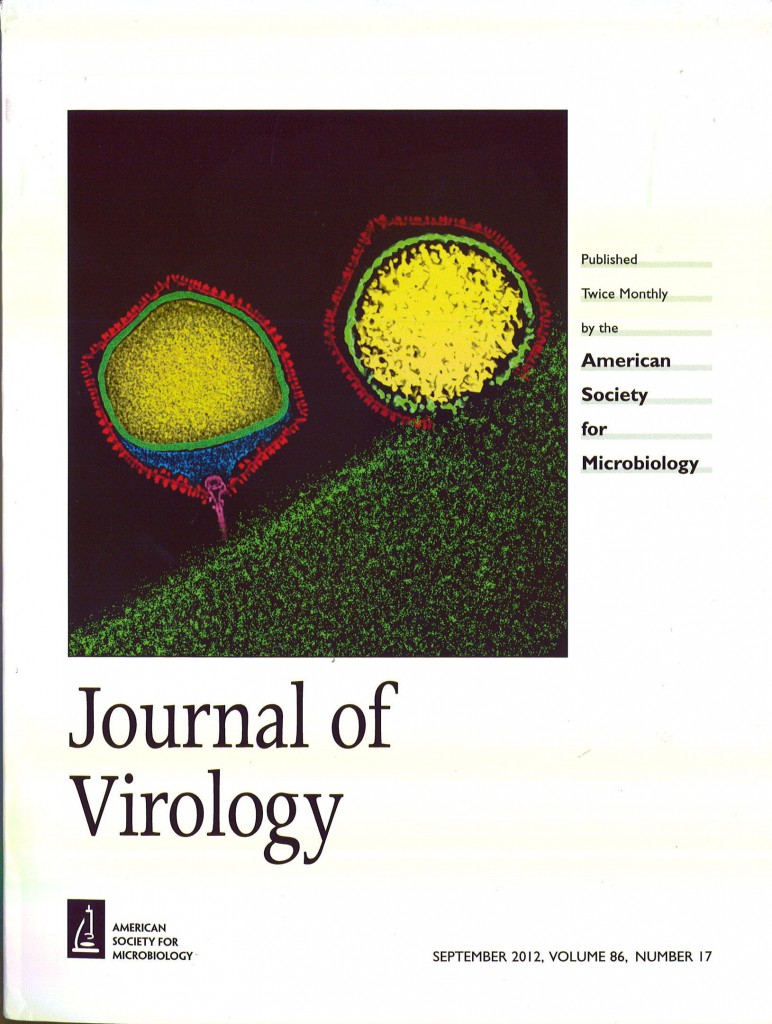
Paramecium bursaria Chlorella Virus 1 Proteome Reveals Novel Architectural and Regulatory Features of a Giant Virus
On the cover: Paramecium bursaria chlorella virus 1 (PBCV-1) bound to algal cell wall fragments in pseudo-color. PBCV-1 is the type member of the genus Chlorovirus (family Phycodnaviridae) that has a large dsDNA genome (yellow) which is enclosed in an internal membrane (green) and surrounded by the 190 nm diameter quasi-icosahedral capsid (red) in the T=169d virion. The image to the left is a virus particle in the initial phase of attachment to the cell wall fragment where the spike structure (purple) from the unique vertex appears to be the binding factor. The image to the right is a virus particle that has bound and is in the process of un-coating. Note the transition of the inner membrane that contains the viral DNA from an asymmetric distribution (left) to the more rounded symmetric state (right) as the virus appears to fuse with the cell. The manuscript reviewed by JVI describes the virion proteome, which consists of 148 virus-encoded proteins and one host-encoded protein (Paramecium bursaria Chlorella Virus 1 Proteome Reveals Novel Architectural and Regulatory Features of a Giant Virus” by David Dunigan, et al.). This image is provided by Drs. Xinzheng Zhang and Michael G. Rossmann of Purdue University and we have collaborated with the Rossmann laboratory on the structural makeup of the PBCV-1 virion.
Image provided by Drs. Xinzheng Zhang and Michael G. Rossmann of Purdue University.
David D. Dunigan, Ronald L. Cerny*, Andrew T. Bauman, Jared C. Roach, Leslie C. Lane*, Irina V. Agarkova*, Kurt Wulser*, Giane M. Yanai-Balser*, James R. Gurnon*, Jason C. Vitek*, Bernard J. Kronschnabel*, Adrien Jeanniard, Guillaume Blanc, Chris Upton, Garry A. Duncan, O. William McClung, Fangrui Ma*, and James L. Van Etten*. September 2012. Paramecium bursaria Chlorella Virus 1 Proteome Reveals Novel Architectural and Regulatory Features of a Giant Virus. Journal of Virology 86(17), pp. 8920–8936.
David Dunigan is a research professor in the Department of Plant Pathology.
*also affiliated with UNL





